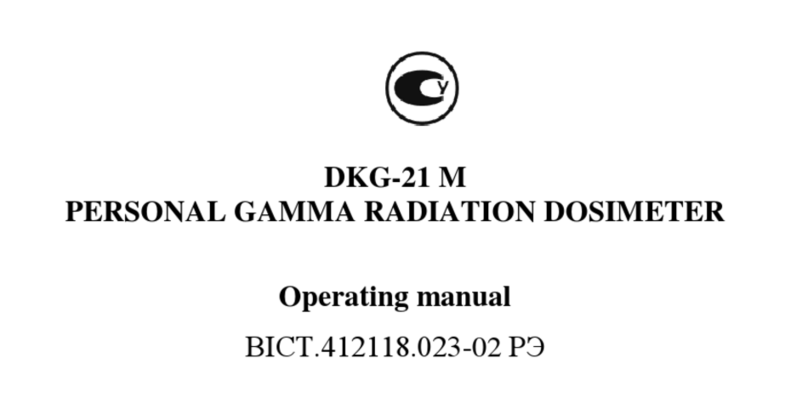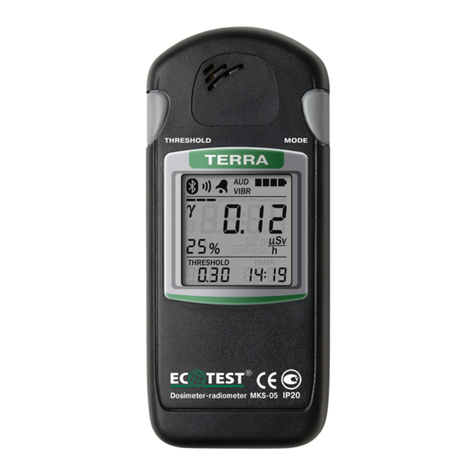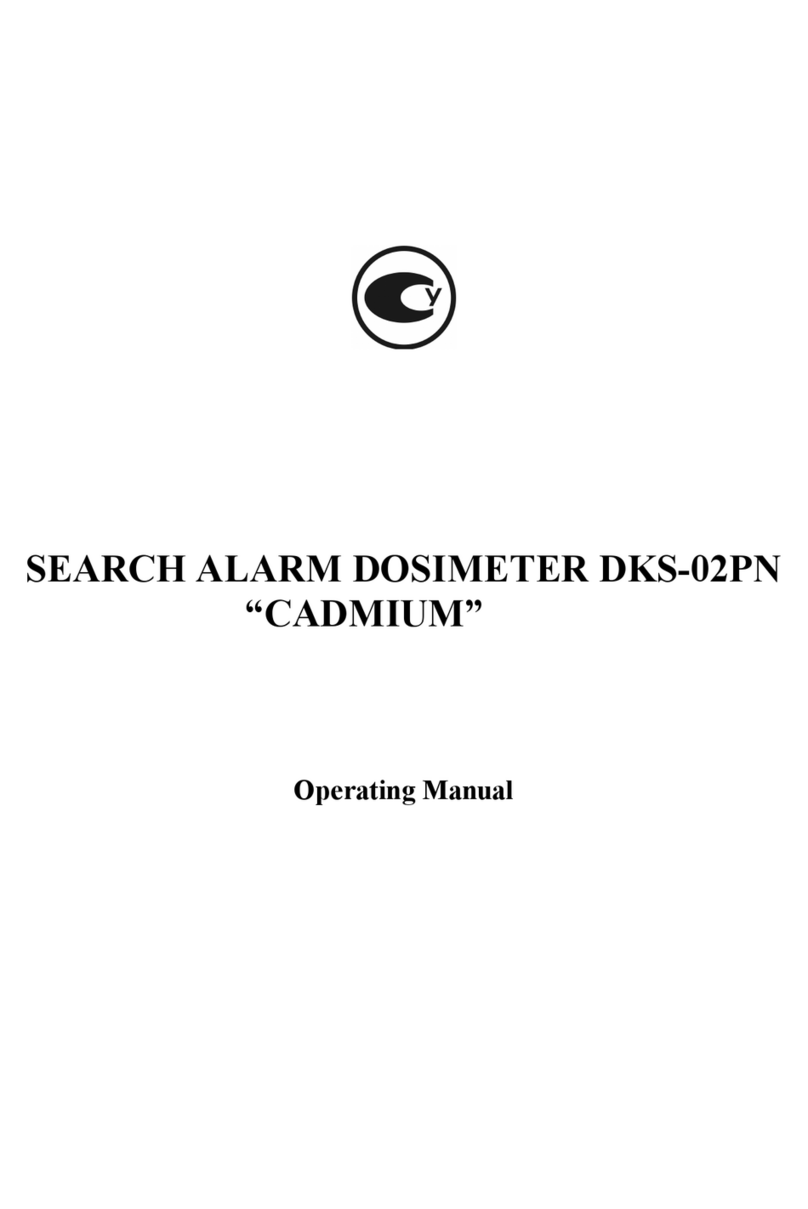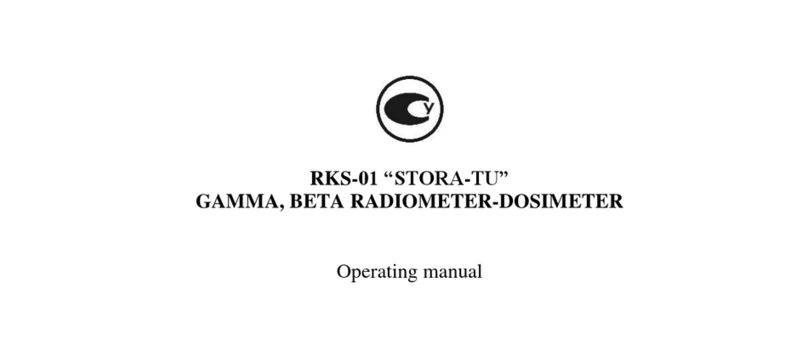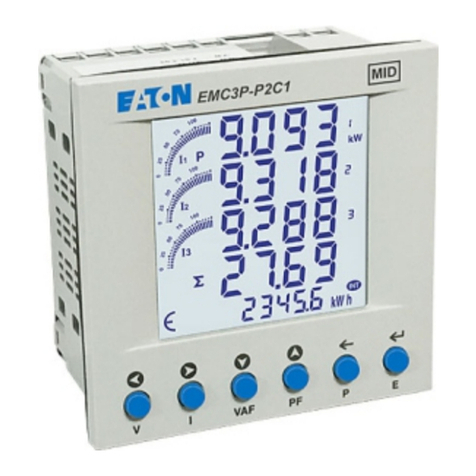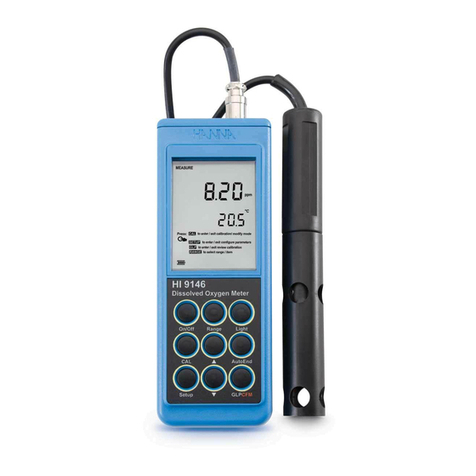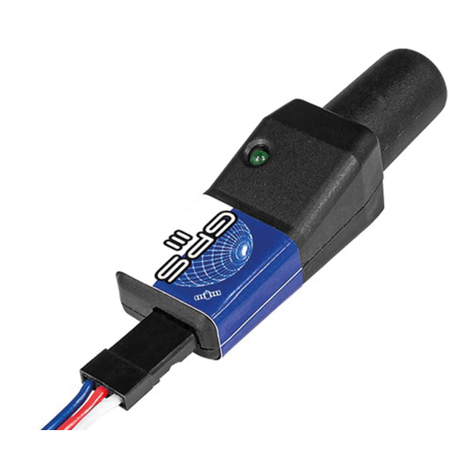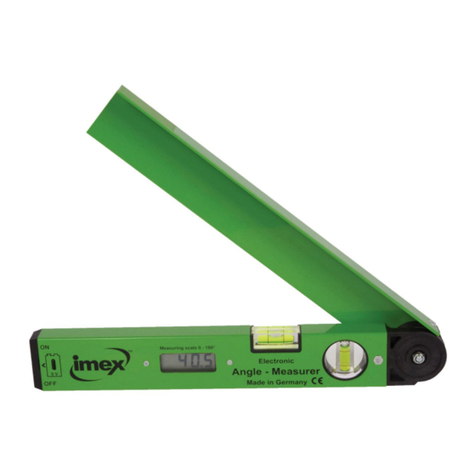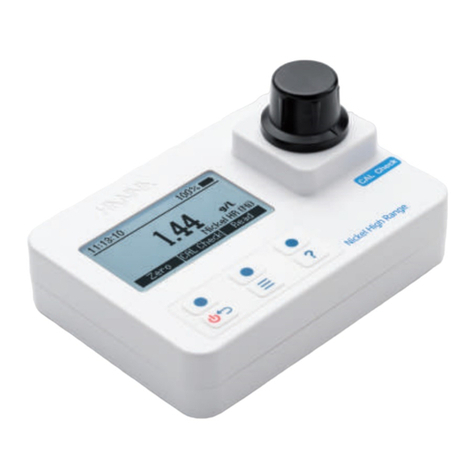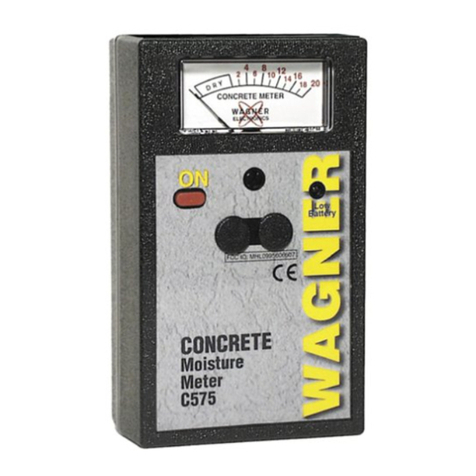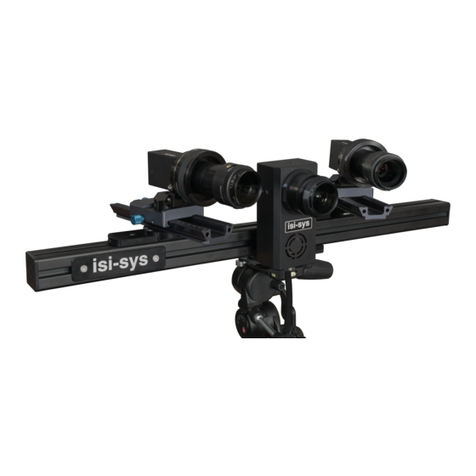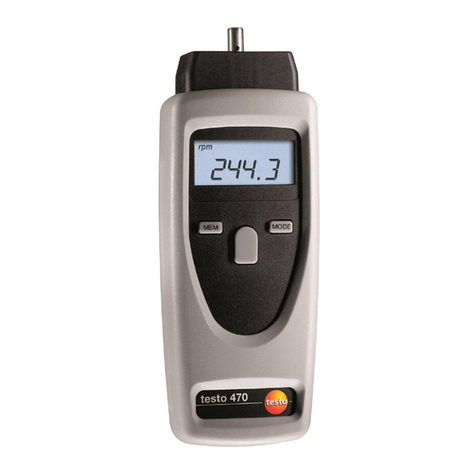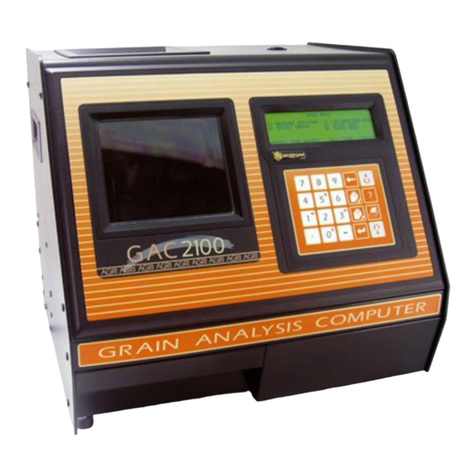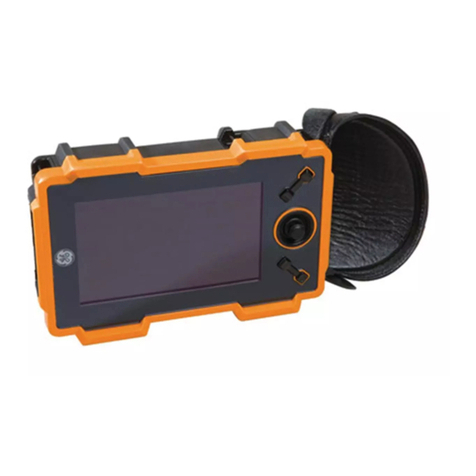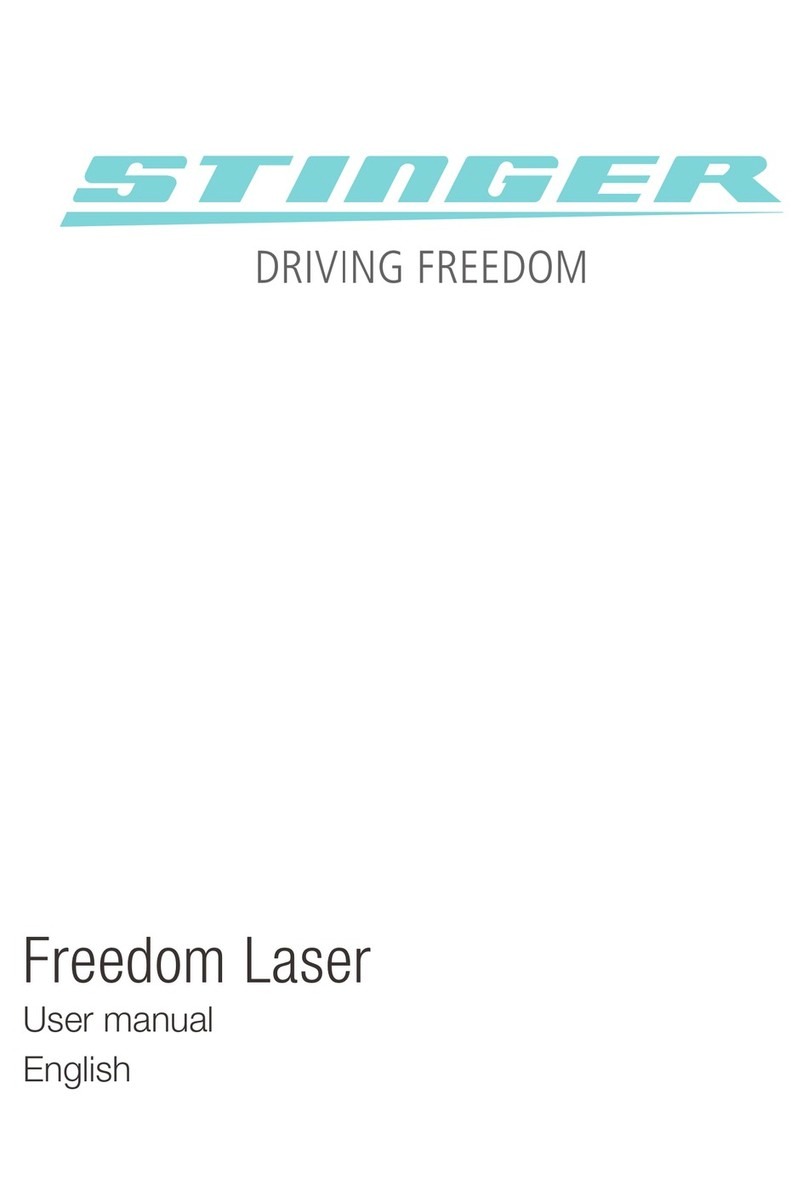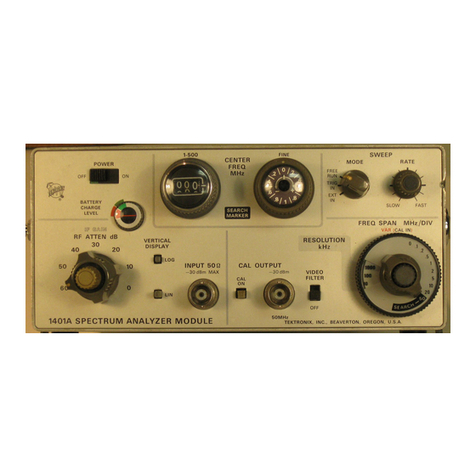ECOTEST VIRTUOSO RKG-14 User manual

RKG-14
“VIRTUOSO”
multipurpose environment activity radiometer
Operating manual
ВIСТ.412139.003-02 НЕ


Dear users,
You have chosen the device in which engineers and developers of our
company had realized a completely new approach to detect and measure
radiocesium, which spread from nuclear accidents in the environment, particularly
in food. Now control of cesium radioisotopes in products will find its application
not only in specialized laboratories but also at home without professional
radiologists.
We managed to create a set of new original gamma spectrometry solutions
which made it possible to use in measurements the detector crystals smaller in size
and cheaper than those of laboratory equipment. This allowed us to significantly
reduce the device price in general compared to laboratory equipment.
We continue developing a new trend in radiocesium monitoring and
constantly improve new mathematical solutions used in our device. We see a great
opportunity for improving the quality of measurements and the device performance
and are going to update our software regularly. Using the experience of successful
application of the device for measuring radiocesium activity in food and different
materials, we have added a separate function for measuring dose rate (DER) of
radioactive cesium in the environment. This feature simplifies the detection of
radiocesium emission, which can be hidden in the background radiation, and thus
allows making quick conclusion of the overall pollution or purity of the area or
premises where we are.
Since the device focuses on universal application in domestic and
professional environment, having considered the users requests, we have
introduced one more additional function –measurement of specific activity of
naturally occurring radioactive materials (radium, thorium, potassium) in soils,
construction materials and buildings. The device can simply, quickly and on the
spot do the measurement, which is very complicated and time-consuming by the
traditional methods (as a rule, samples of materials are selected and taken to the
laboratory for measurement). This mode of the device operation is useful for
geologists, builders, environmentalists, students, etc.
Development of the device encompasses the unique experience of
contamination monitoring after the Chornobyl disaster. However, we understand
that the Fukhusima accident has its unique features. That is why we expect to get
information about your first-hand experience of our device use. Experience of the
device behavior under real conditions, plus our new steps towards mathematical
and metrological enhancements will be implemented in later versions of the
software. Together we will make measurements easier and more comfortable. Our
device will make you feel confident that radiocesium is under reliable control
The device enables a user to independently update a software version using
the Internet. The Virtuoso software is available on the Google Play for free.
Best regards,
“ECOTEST” team

2
Version 8
Last updated: June 2021

3
CONTENTS
1 DESCRIPTION..........................................................................................8
1.1 PURPOSE OF USE..............................................................................................8
1.2 TECHNICAL SPECIFICATIONS ...........................................................................8
1.3 DELIVERY KIT ...............................................................................................11
1.4 DESIGN OF THE “VIRTUOSO” RADIOMETER................................................12
1.5 SWITCHING THE DETECTING DEVICE ON AND OFF..........................................14
1.6 CHARGING THE STORAGE BATTERY OF THE DETECTING DEVICE....................15
2 OPERATION OF THE “VIRTUOSO” RADIOMETER.........................16
2.1 INSTALLING THE VIRTUOSO APPLICATION ON AN ANDROID DEVICE..............16
2.2 STARTING THE VIRTUOSO APPLICATION ON AN ANDROID-DEVICE ................16
2.3 CONNECTING THE ANDROID DEVICE TO THE DETECTOR................................18
2.4 MODE OF GAMMA RADIATION DOSE RATE MEASUREMENT ............................21
2.4.1 Saving measurement results of gamma radiation dose rate....................22
2.5 MODE OF RADIOCESIUM SPECIFIC/VOLUME ACTIVITY MEASUREMENT ..........23
2.5.1 Sequence of determining specific/volume activity of radiocesium in
food .................................................................................................................25
2.5.2 Important recommendations for specific/volume activity
measurement...................................................................................................47
2.6 MODE OF RADIOCESIUM SURFACE ACTIVITY MEASUREMENT ........................52
2.6.1 Sequence of determining surface activity of radiocesium in soil ...........55
2.6.2 Important recommendations for radiocesium surface activity
measurement....................................................................................................59
2.6.3. Mode of DER from radiocesium measurement.....................................63
2.7 MEASUREMENT MODE OF SPECIFIC/VOLUME ACTIVITY OF NATURALLY
OCCURRING RADIOACTIVE MATERIALS................................................................68
2.7.1 Sequence of determining specific/volume activity of naturally occurring
radioactive materials........................................................................................68
2.7.2 Important recommendations for measurement of specific/volume activity
of naturally occurring radioactive materials....................................................68
2.8 TRACKS.........................................................................................................72
2.9 DATA MANAGEMENT AND VIEWING ..............................................................75
2.9.1 Data viewing ..........................................................................................75
2.9.2 Data Management...................................................................................78
2.10 METROLOGICAL OPERATIONS......................................................................82
2.11 PROGRAM SETTING,HELP TEXT,INFORMATION ...........................................83
2.12 DEMO MODE................................................................................................86
3 VIRTUOSO APPLICATION UPDATE..................................................87
4 ENERGY CALIBRATION .....................................................................88
5 TROUBLESHOOTING AND MESSAGES............................................90
6 SAFETY STANDARDS FOR CESIUM ISOTOPES ACTIVITY..........91
6.1 SAFETY STANDARDS FOR CESIUM ISOTOPES SPECIFIC ACTIVITY
IN FOOD............................................................................................................91

4
6.2 CESIUM ISOTOPES SURFACE ACTIVITY STANDARDS UNDER
NRBU-97 STANDARD.....................................................................................92
6.3 STANDARDS OF EFFICTIVE SPECIFIC ACTIVITY OF NORM UNDER
NRBU-97 ...........................................................................................................93
7 MANUFACTURER INFORMATION....................................................94
APPENDIX 1
EXAMPLES OF MEASUREMENT REPORTS........................................95

5
INTERESTING FACTS
Why do we monitor exactly cesium?
Human external exposure and a risk to inhale radioactive substances are
attributed to the early phase of a nuclear and radiological accident. In the years
following the Chornobyl nuclear accident in Ukraine, of the most long-lasting and
dangerous factors of radiation impact has remained radionuclide intake with food in
humans. For this reason, control of radioisotopes content in food becomes a
burning issue for quite a long period of time.
Among radioisotopes, which were released after the accident into the
environment, most capable of spatial distribution and transfer via biological
pathways are radioactive iodine and cesium. However, radioactive iodine tends to
decay rapidly so that its residence time coincides with the early phase of the
accident.
In this way, radiocesium further remains a leading contributor to distribution
in the environment. The natural environment may contain other types of
radioisotopes released from a damaged reactor, but in practice, say, uranium is
unlikely to reach those regions lacking such a mobile radioisotope as cesium. The
presence of cesium clearly shows that the radioactive contamination from the
reactor has reached a certain area; on the contrary, the absence of cesium in that
particular area means that other contaminants from the reactor are considered
unlikely.
Therefore, radiocesium is the so called marker of the distribution of the
radioactive contamination. In addition, cesium is readily absorbed and can be
transferred through biological chains (plants-animals-people). Keeping radiocesium
content in food under control, we can address the issue of consumption of
contaminated food, as well as detect pathways through which radioisotopes migrate
in various ecosystems and regions.
How to measure cesium isotopes specific activity in food?
Traditional approaches are based on laboratory studies that involve a
selection of individual samples from the food volume. These samples are placed in
containers and for measurements are positioned towards detectors enclosed in
protective facilities which are located in special rooms. The advantage of these
surveys is that they ensure high accuracy of a radiometric measurement of a
sample. Their main drawback is that this accuracy is provided only for an
individual sample but not for the whole batch. The extent to which this sample is
typical of the overall volume of food is a classic problem (heterogeneity of
contamination is not considered as the sample may be randomly selected either

6
from a point not typical of the environment or from a material too clean or too
contaminated).
Moreover, carrying out an examination by sampling practices appear to be
quite a time-consuming, inconvenient and sometimes even unacceptable procedure
as the sample collection might cause damage to the integrity of a product (or
packaging). In this way, traditional laboratory surveys play a major role in ensuring
accurate official analysis (especially in situations of complex analysis of heavy
contamination), but traditional methodology for investigating samples is
inconvenient for practical applications on a large scale, and for this reason it is
unable to address the issue of efficient, massive monitoring that could be a reliable
“filter” on the way of radioactive migration.
With a need for a large-scale practical use, we have created another concept
of monitoring radiocesium content in food products. We have also developed the
method used to measure radiocesium contained in the food (not only in products
but also in any other packages) by the way of placing the detector close to an object
under testing. This approach does not always yield such a profound analysis as
laboratory studies do, but it is convenient and practical.
Due to a simple measurement procedure, “VIRTUOSO” monitors
radiocesium content under almost any conditions and causes no damage to a food
package. Apart from this, with no need for a sample collection the device allows
you to test for cesium not only food products but also soils under cultivation, as
well as any other objects or substances that may contain or transmit cesium
themselves. In general, the possibility to place the detector close to different points
of the tested objects provides more current information, and this feature makes the
concept of “VIRTUOSO” device completely different from the laboratory studies
participating in a limited sample testing.
Why testing food products using “VIRTUOSO” is so convenient?
At first you can simply and quickly assess the potential contamination of the
area or premises where we are, or some large volumes of materials (e.g. wood
piles, containers with food, etc.). No samples, not laboratories. Holding the device
in your hands just turn on "Cesium DER" mode and see if characteristic radiation
of radiocesium is present in this place along with background radiation. If the
detector notices radiocesium, then any objects (materials, products, etc.) in this
place or in this room may also contain contamination. Then you should switch to a
specific testing of materials and products of interest. This examination using
“VIRTUOSO”is very simple.
While testing large food volumes instead of taking samples, one places the
detector close to the food. At this point, the detector is exposed to radiation coming

7
from the volume significantly larger in size than a common Marinelli sample
container. Depending on a state and density of tested food, information about
radiation is transferred to the attached detector from the food with the volume of
~50÷250 l. If performing the same number of measurements by placing the detector
as that of taking samples by a traditional method, one will get much more reliable
integrated image of large volumes of food as there is a sort of direct data
communication with the substantially larger volume of tested object. Apart from
this, positioning the detector is more convenient and easier than selecting, crashing
and placing a sample in the container.
As far as testing of small packages is concerned, measurement made by
placing the detector is not only more convenient, as it requires no burdensome
sampling procedure, but also more reliable, as radiation is measured from almost
all volume of packaging rather than from the collected one of 0.1 l to 1 l.
Apart from radiocesium monitoring, “VIRTUOSO” enables very simple
measurement of specific activity of naturally occurring radioactive materials in
various materials without traditional sampling (soil, building materials, mineral raw
materials, etc.). It is enough to put the device on soil or material of interest and get
the result. You have just to follow some simple rules of placing the device for
measurement that are listed in this manual and "Help" of the device. You can even
measure the average activity of naturally occurring radioactive materials (NORM)
in building materials, which are in the walls, floor and ceiling of a certain room.
You do not need to hammer or pry out anything of the walls, but simply put the
device inside the room. NORM content in soils or mineral accumulations in field
work is also tested very simply and quickly - just put the device.

8
1 DESCRIPTION
1.1 Purpose of use
The RKG-14 “VIRTUOSO” multipurpose environment activity radiometer
(hereinafter called –the radiometer) is designed for
- detection of 137Cs and 134Cs radioisotopes (hereinafter - radiocesium) in the
objects of the environment;
- evaluation of the detected radiocesium content in the values of specific,
volume and surface activities;
- control of background radiation level in the environment, including
evaluation of the radiocesium emission level as the value of ambient dose
equivalent rate strictly from radiocesium, which is included in the natural
background;
- measurement of volume and specific activities of naturally occurring
radioactive materials 40К, 226Ra, 232Th (hereinafter - NORM) in the objects of the
environment.
1.2 Technical specifications
Key specifications of the radiometer are presented in Table 1.1.
Table 1.1 - Key specifications of the radiometer
Name
Unit of
measurement
Standardized
value
Measurement range of specific activity of
radionuclides 137Cs, 134Cs in the objects of the
environment in geometries “2”, “4”
Bq/kg
50 - 200 000
Main relative permissible error limits of
measurement of specific activity of
radionuclides 137Cs, 134Cs in the objects of the
environment in geometries “2”, “4”, Р=0.95
%
35
Estimation range of surface activity of
radionuclides 137Cs, 134Cs in the objects of the
environment
Bq/m2
500 –1 000 000
Measurement range of the effective specific
activity of naturally occurring radionuclides
226Ra, 232Th, 40K in the objects of the
environment in geometries “2”, “4”
Bq/kg
200 - 20 000

9
Table 1.1 (continued)
Name
Unit of
measurement
Standardized
value
Main relative permissible error limit of
measurement of the effective specific
activity of naturally occurring
radionuclides 226Ra, 232Th, 40K in the
objects of the environment in
geometries “2”, “4”, Р=0.95
%
35
Measurement range of gamma radiation
ambient dose equivalent rate from
137Cs, 134Cs
μSv/h
0.001 - 10
Main relative permissible error limits
of measurement of gamma radiation
ambient dose equivalent rate from
137Cs, 134Cs, given Р=0.95
%
20
Unstable readings of the radiometer
during 8 hours of operation, not more
than
%
5
Measurement range of gamma radiation
ambient dose equivalent rate
)10(
*
H
μSv/h
0.01 –50.00
Main relative permissible error limit of
measurement of ambient dose
equivalent rate (DER) of gamma
radiation, given P=0.95
%
15+1/
)10(
*
H
,
where
)10(
*
H
–is
a numeric value
of gamma
radiation DER,
μSv/h
Sensitivity to gamma radiation for
137Cs, 134Cs, not less than
(pulse/s) /(μSv/h)
500
Energy range of registered gamma
radiation
-
50 keV –
3.0 MeV
Energy dependence of readings for
energies 59 keV (241Аm),
1.3 MeV (60Со) and 0.66 MeV (137Cs)
%
30

10
Table 1.1 (continued)
Name
Unit of
measurement
Standardized value
Dependence of sensitivity from the angle
of recorded radiation incidence
(anisotropy), does not exceed
%
30
Time of continuous operation of the
detecting device from full battery under
gamma background not more than
0.5 μSv/h, not less than
hrs
24
Dimensions of the detecting device, not
more than
mm
114×36×83
Weight of the detecting device without
case
kg
0.352
(with the battery)
Note –Weight and dimensions of the Android device are provided in the
manufacturer’s documentation for the device
1.2.1 Time of continuous operation of the Android device is specified in its
user’s guide.
1.2.2 Data communications between the radiometer’s detecting device and
the Android device is done via Bluetooth wireless technology. Communication
range is no less than 10 m (under line of sight).
1.2.3 The radiometer’s detecting device endures:
- ambient air temperature from minus 20 to +50 оС;
- relative humidity up to 95 % at +35 оС temperature, non-condensing;
- atmospheric pressure from 60 to 106.7 kPa.
1.2.4 The radiometer’s detecting device contains no precious materials.

11
1.3 Delivery kit
Table 1.2 –Delivery kit of RKG-14 “VIRTUOSO” radiometer
Type
Name
Q-ty
Note
BICT.468166.030-02
Detecting device of
RKG-14
“VIRTUOSO”
multipurpose
environment
activity radiometer
1 pc.
With the installed
LIR14500
Lithium-ion battery of
AA type
Android device
1 pc.
Supplied under
separate order.
Model is not specified
BICT.436231.003
Battery charger
1 pc.
Model is not
specified.
Leather case
1 pc.
PELI 1170
Transport case
1 pc.
PELI 1020
Additional
waterproof case
1 pc.
Supplied under
separate order
BICT.412139.003-02 ПС
Passport
1 pc.
BICT.412139.003-02 HE
Operating manual
1 pc.
Note –If you order the Android device included in the radiometer’s kit, this
device comes with the installed custom-made "Virtuoso" software.
If there is no separate order for the Android device and you buy it
independently in the outlet chain, please download the custom-made "Virtuoso"
software into the Android device from Google Play.

12
1.4 Design of the “VIRTUOSO” radiometer
The RKG-14 “VIRTUOSO” multipurpose environment activity radiometer
consists of the detecting device of the radiometer, an Android device (a tablet PC or
a smartphone running Android OS) and special-purpose software “Virtuoso” for
the Android device.
1.4.1 Android device
Android device* is a smartphone or a tablet PC, which runs the Android™
operating system.
* Android is a trademark of Google Inc.
If some other Android device is used instead of the one included in the
delivery kit, you should make sure it meets the following technical requirements:
1. Built-in Bluetooth module;
2. Built-in GPS-module
3. Android 2.3 version and later.
The Android device is intended to process and display data obtained from
the detector.
Data exchange with the detecting device is done via Bluetooth wireless
technology.
For detailed information about the Android device, please see its user’s
guide.

13
1.4.2 Radiometer’s detecting device is sown in Figure 1.1.
(a)
(b)
Figure 1.1 - Detecting device of RKG-14 “VIRTUOSO” multipurpose environment
activity radiometer

14
The radiometer’s detecting device is designed in a plastic dump- and
dustproof housing. The ingress protection rating is IP54. The housing of the
radiometer consists of covers (1, 2), a panel (3) and a battery compartment lid (4),
and a connector for storage battery charging (9). The “BATTERY” (5),
“COM.” (6) and “BC” (battery charger (7)) light-emitting diodes (LEDs), as well
as the on/off button (8) of the detecting device are located on the panel.
There is a compartment (10) for storage battery (11) on the cover (1), which
is closed with the lid (4) with two screws (12).
The radiometer’s detecting device includes: the scintillation detecting unit of
gamma radiation CsI(Tl) of 23 cm3volume with semiconductor photomultiplier, the
spectrometric channel with the analogue-digital processing unit, the Bluetooth
radio channel module and the battery charging circuit.
1.5 Switching the detecting device on and off
The detecting device is switched on by pressing the button (8). Once the
detecting device switches on, the “COM.” LED (6) should be highlighted and start
blinking quickly (twice a second).
The detecting device switches off automatically every 3 minutes provided
that the Android device is not connected to it, or it can be switched off either
operated by the Android device when exiting “Virtuoso” application, or when the
storage battery capacity is critically low. With the button (8) still held
(approximately 3 seconds) until “COM.” (6) and “BATTERY” (5) start blinking
quickly, you can also force the detecting device to switch off.
The “BATTERY” (5) LED indicates the status of the detecting device’s
storage battery. If the storage battery capacity is less than 25%, the “BATTERY”
LED starts blinking red once every two seconds; given the capacity is less than 5%,
the “BATTERY” LED blinks twice a second.
The “COM.” (6) LED shows the status of connection between the Android
device and the radiometer’s detecting device. If the connection is established, the
LED starts blinking once every 1.5 seconds. High-frequency blinking (10 times per
second) means that there is no connection with the Android device.

15
1.6 Charging the storage battery of the detecting device
The external battery charger, which is included in the radiometer’s kit, is
connected to the connector (9). When you connect the charger to the detecting
device, the “BC” LED (meaning that external power is supplied) and the
"BATTERY" LED should light up. Upon completion of the charging process, the
"BATTERY" LED should go out and the "BC" LED should stay on. The "BC"
LED goes out only after removing the charger from the detecting device.
The process of battery charging does not affect the performance of the
device. If necessary, the detecting device can continuously operate from an external
power supply.
Important! Charge the battery of the detecting device within the ambient
temperature range from 0 to 45оС. Noncompliance with this temperature range can
cause failure or significant reduction in capacity of Li-Po battery.
Important! In case of the storage battery (11) failure it should be replaced
with a new one of the same type (14500 (AA) Li-Po battery). Unscrew the screws
(12), remove the lid (4) and insert a new battery in the battery compartment (10)
observing the polarity. Replacement of a faulty battery can be performed by the
manufacturing company of the detecting device or its authorized service center.
Important! If Li-Po battery is improperly installed, the radiometer goes out
of service. Warranty does not apply to this damage and the client is solely
responsible for the failure.

16
2 OPERATION OF THE “VIRTUOSO”RADIOMETER
2.1 Installing the Virtuoso application on an Android device
If a tablet PC or a smartphone were included in the delivery kit of the
device, the Virtuoso application would be already installed on it. If some other
Android device is used, you should download and install the application on the
latter. To do this, please use your Android device to visit Google Play, find and
install Virtuoso application from the manufacturer PE «SPPE «Sparing-Vist
Center».
As soon as installation is completed a window with the “Application
installed” massage will be displayed over a period of time. The icon will
appear in a list of the installed applications, and on the desktop.
Note. The Virtuoso application interface uses the term "detector" instead of
the "detecting device", therefore we are going to use the term "detector" for
convenience in the description of this software to refer to the detecting device of
the "VIRTUOSO" radiometer.
2.2 Starting the Virtuoso application on an Android-device
If the icon does not appear on the desktop, tap on the icon "Programs"
( ) at the bottom of the Home screen of the Android device, which opens a
window with icons for all installed applications. If icons cannot fit on the screen in
one view, you can swipe it to view more. To open the Virtuoso application, find
icon in the list and tap it.
For detailed instructions for working with the Android device, refer to the
user’s guide of the Android operating system.
The window of the Virtuoso application is divided into two areas:
1) a symbol area;
2) a work area.
The symbol area is always at the top of the Virtuoso application window and
is shown in Figure 2.1.

17
Figure 2.1 - Symbol area
The “Antenna” (1) symbol indicates the status of the connection to the
detector. The background of “Antenna” turns green if your Android device is
connected to the detector. The blinking symbol in the red background means that
connection to the detector is either unstable or absent. The latter may be caused by
too long distance between the Android device and the detector.
The “Battery” (2) symbol shows the rechargeable battery charge level of the
detector, and whether the charging device is connected to the detector.
The number of a connected detector (3) is displayed in the center of the
symbol area.

18
2.3 Connecting the Android device to the detector
1.
2.
3.
4(a)
4(b)
4(c)
Figure 2.2 - Connecting the Android device to the detector
Table of contents
Other ECOTEST Measuring Instrument manuals
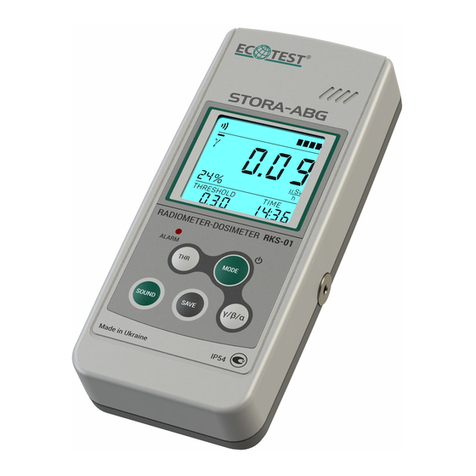
ECOTEST
ECOTEST STORA-ABG RKS-01 User manual
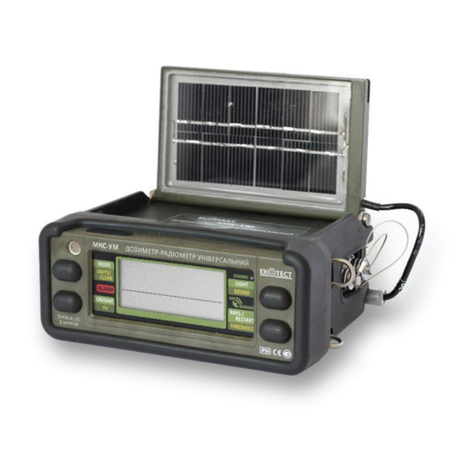
ECOTEST
ECOTEST MKS-UM User manual
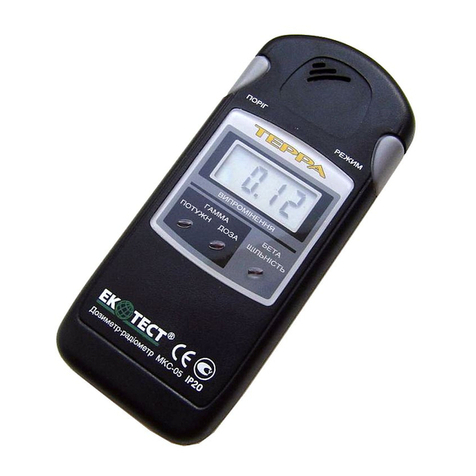
ECOTEST
ECOTEST MKS-05 TERRA-P+ User manual
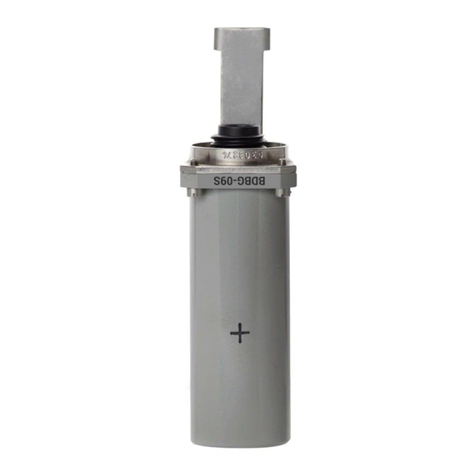
ECOTEST
ECOTEST BDBG-09S User manual
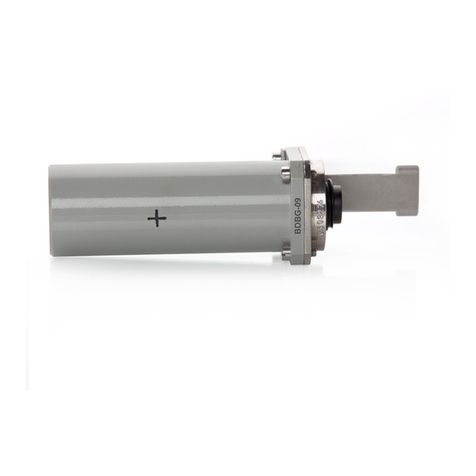
ECOTEST
ECOTEST BDBG-09 User manual
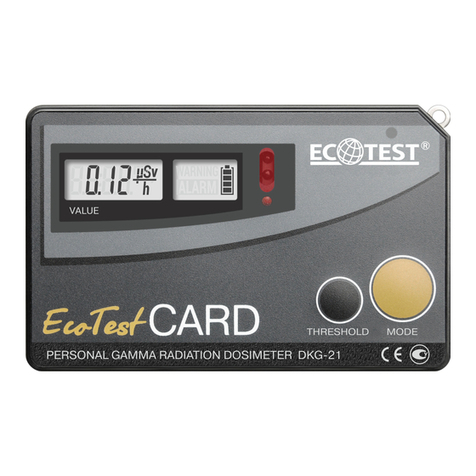
ECOTEST
ECOTEST DKG-21 User manual
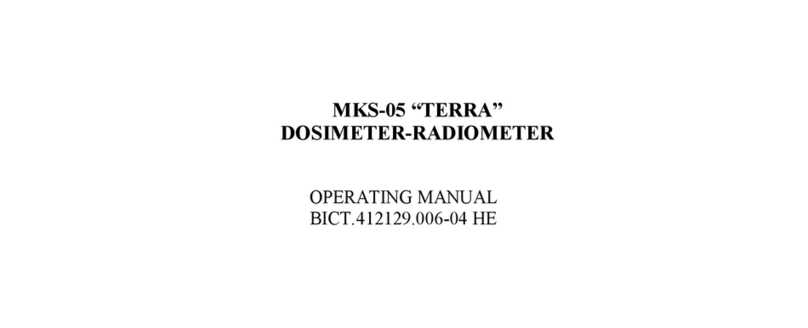
ECOTEST
ECOTEST MKS-05 TERRA User manual
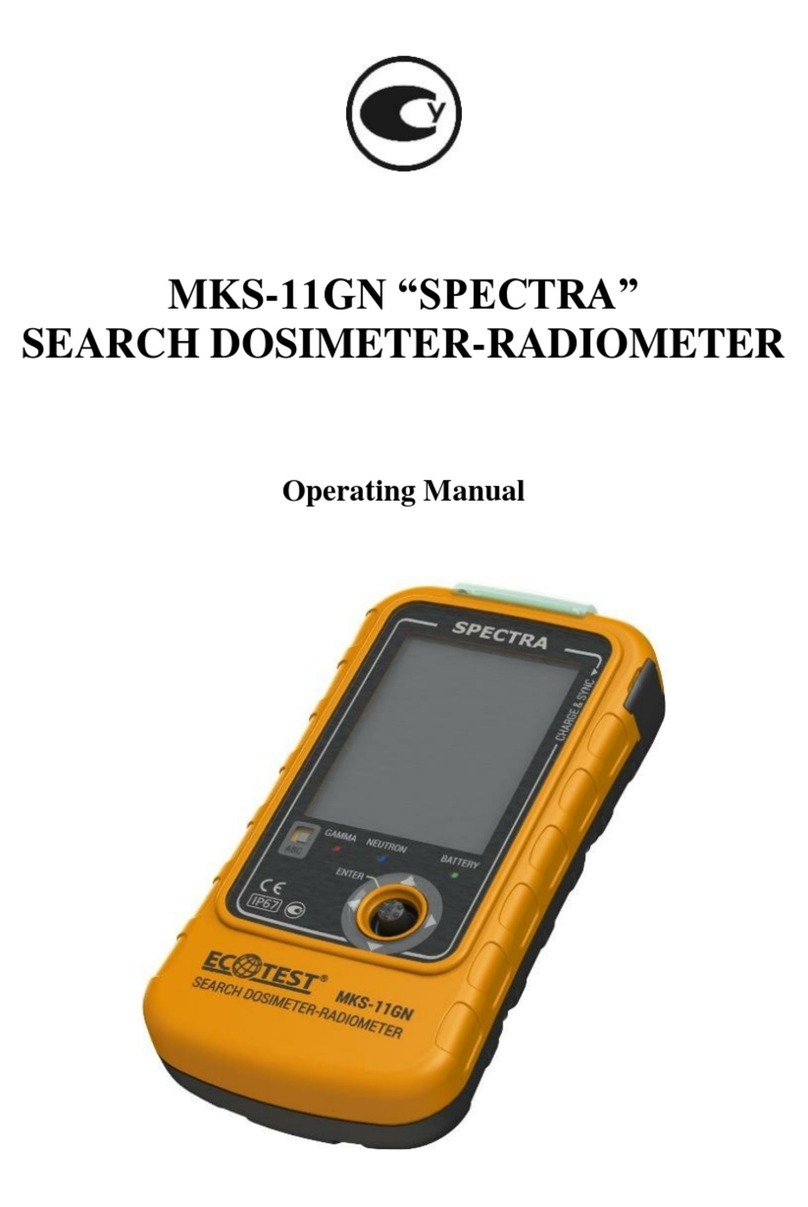
ECOTEST
ECOTEST SPECTRA MKS-11GN User manual
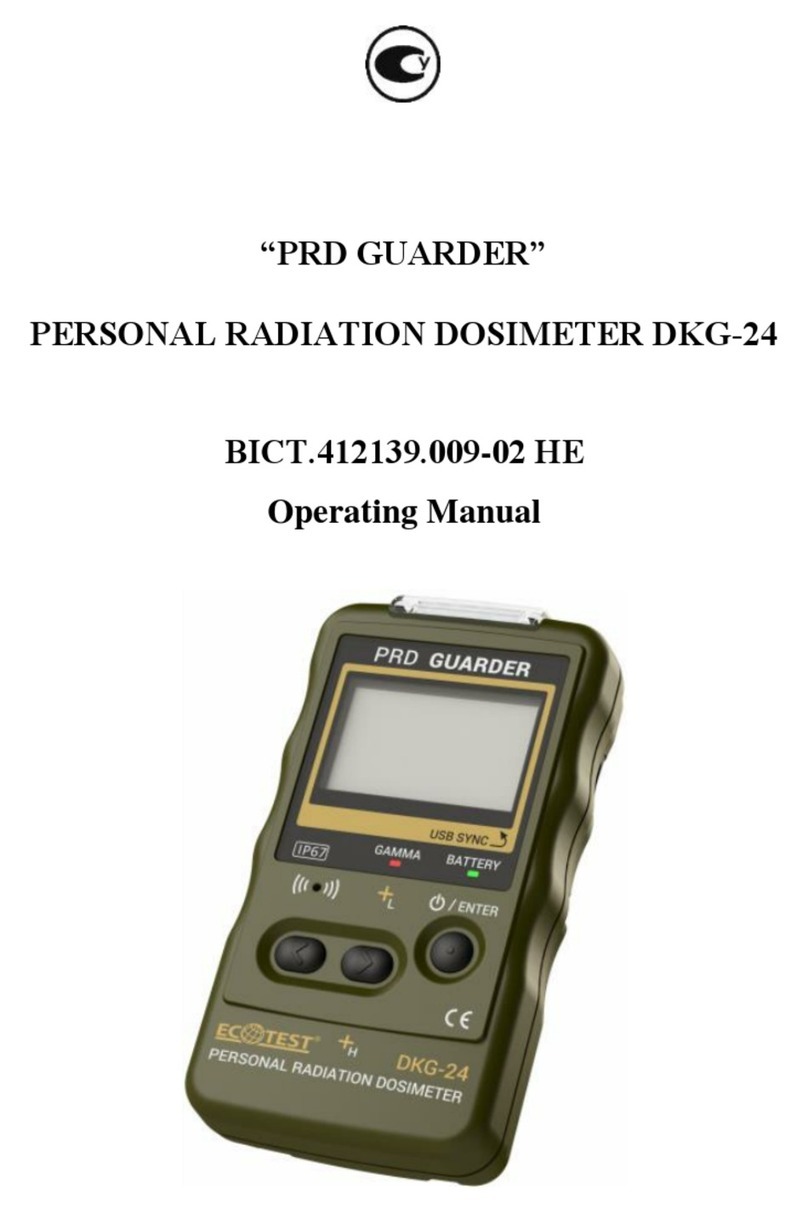
ECOTEST
ECOTEST PRD GUARDER DKG-24 User manual
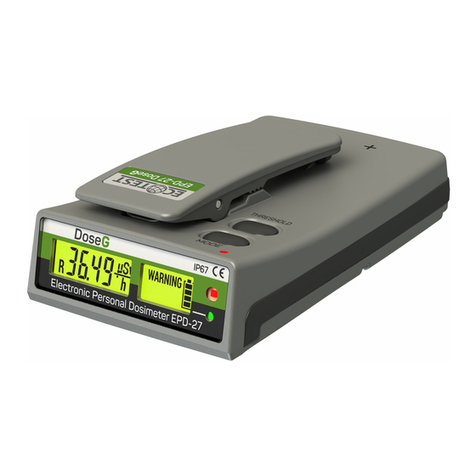
ECOTEST
ECOTEST DoseG User manual
